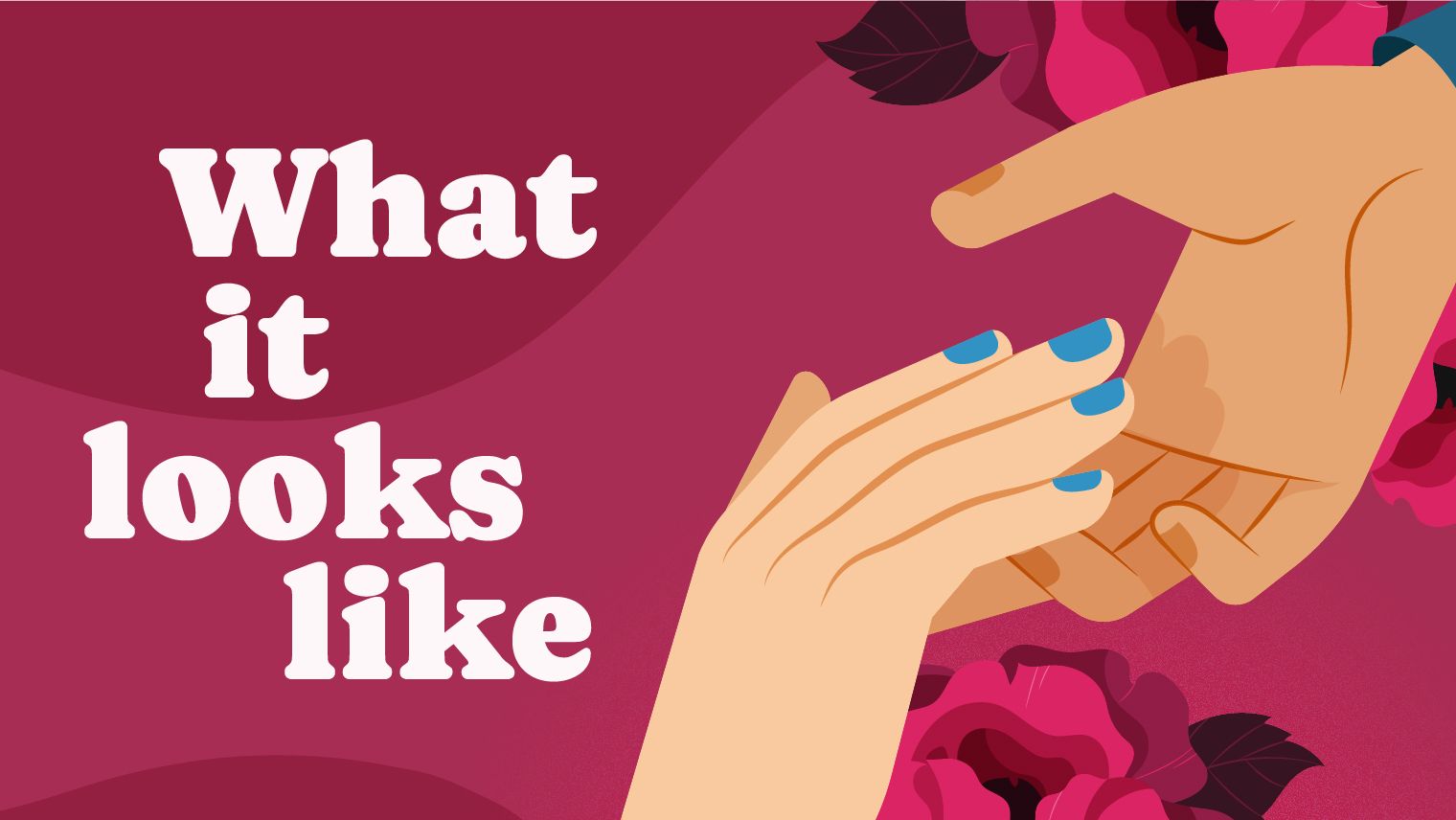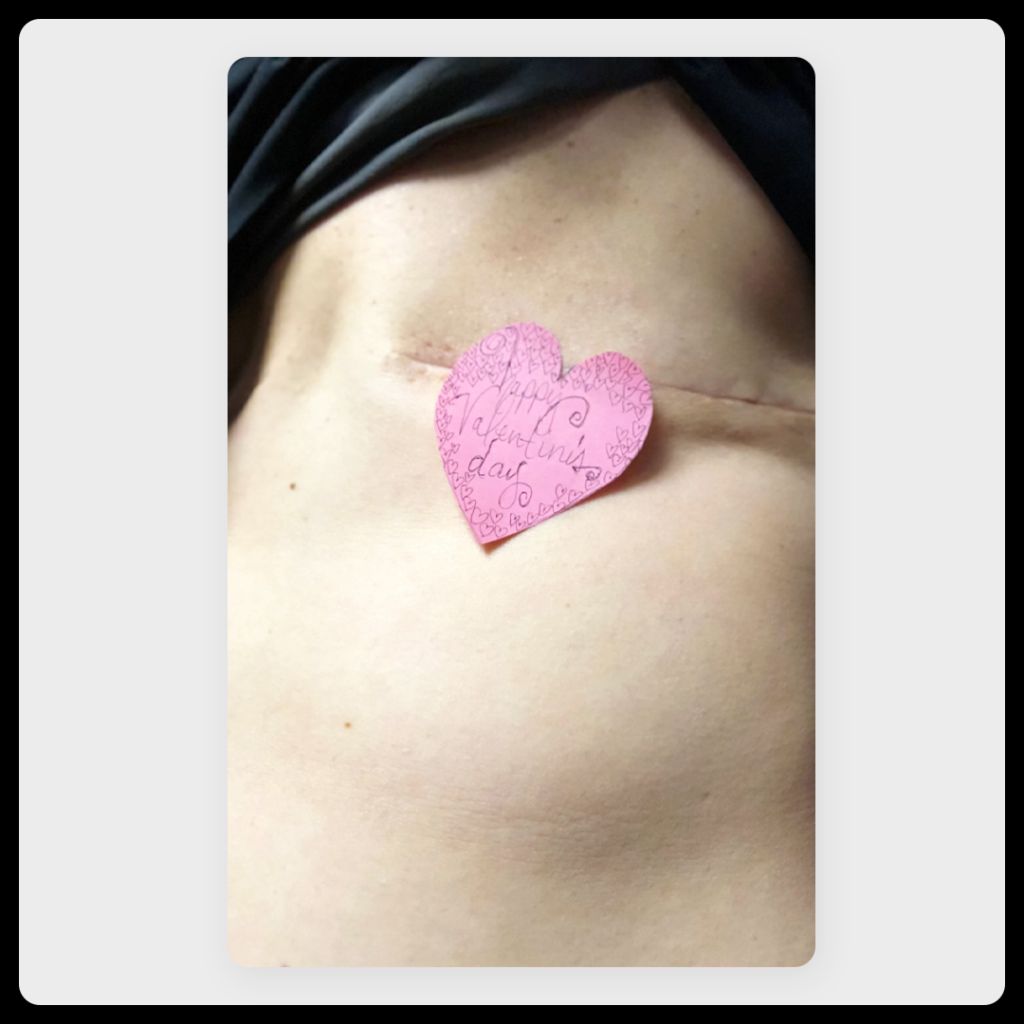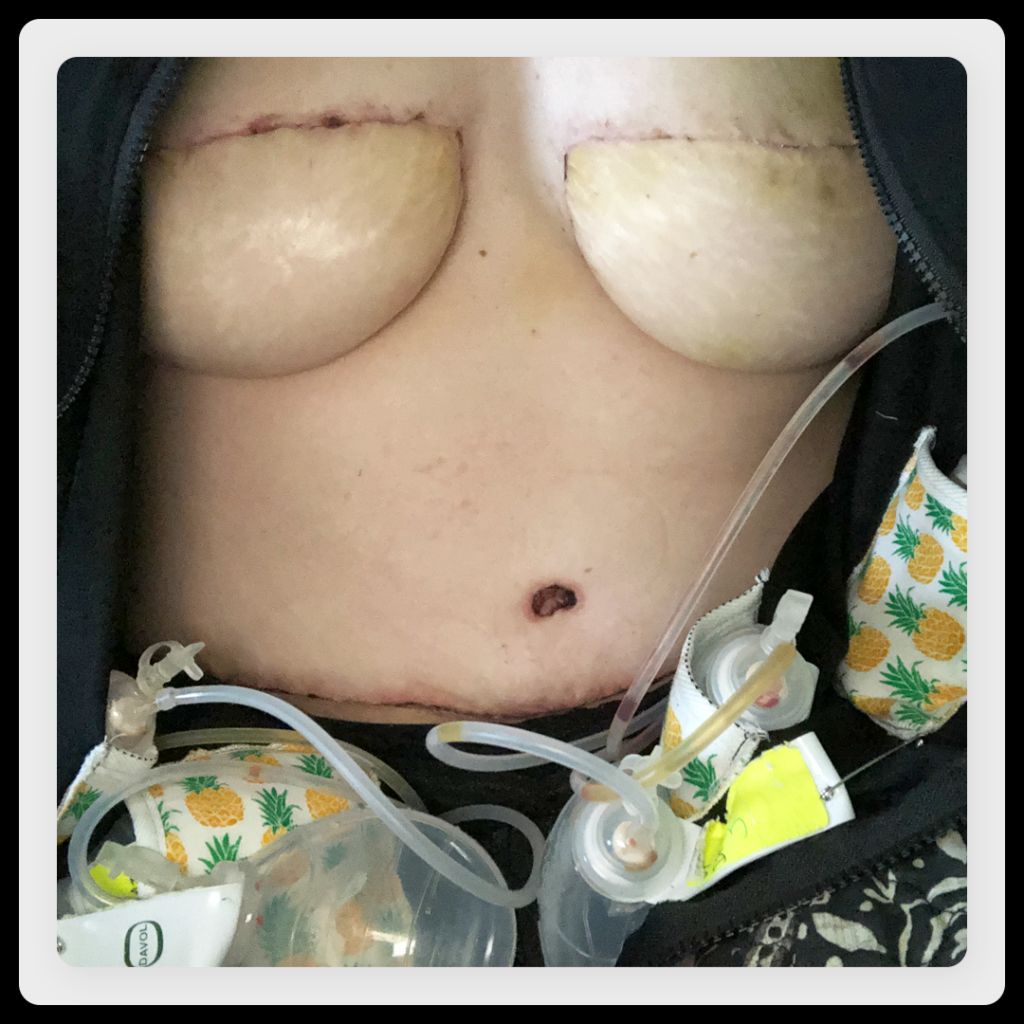I Know It’s Not Me: Double Mastectomy to Flat Closure to DIEP Flap with No Nipple
August 21, 2024
Content created for the Bezzy community and sponsored by our partners. Learn More

3553d748-6348-415c-ab37-f7a0178081cf Illustration by Brittany England
- Procedures: double mastectomy to flat closure, DIEP flap reconstruction with no nipples
- Reconstruction immediately postmastectomy: no
- Years of procedures: 2017 and 2019
- Age: 34 years old
- Ethnicity: white
This article contains graphic, intimate images of a postsurgery body. The photos have been generously shared by a breast cancer survivor so that others can benefit from uncensored visual information that may help them make important surgical decisions for themselves.


The diagnosis timeline
I was diagnosed with triple-negative breast cancer in September 2017. I have the BRCA1 gene, but I didn’t know it at the time. I felt kind of betrayed by my body because I worked to lose 130 pounds before diagnosis.
At first, I was going to have a lumpectomy and then undergo chemo. However, my nurse navigator — a registered nurse who acts as a patient advocate — brought up genetic testing.
She scheduled an appointment for me to get a second opinion from an oncologist out of state. The new doctor also recommended genetic testing, and I decided it was better to know upfront. They got the results back a few weeks later, and we had a plan within a week.
The surgery process
I decided to get a double mastectomy in October 2017. I just wanted both breasts gone.
Instead of immediate reconstruction, I chose flat aesthetic closure with no skin flaps. The scarring was minimal, and the closure was very straight and clean. It looked nice, and I could definitely live my life like that.
In late 2019, I had an oophorectomy (surgical removal of my ovaries) because the BRCA1 mutation carries a high risk of ovarian cancer. I decided to do deep inferior epigastric perforator (DIEP) flap surgery at the same time.
I’d lost weight while getting in shape, and I wanted to sculpt what was left. I had extra skin from the weight loss, so I didn’t have to have tissue expanders. The surgeons grafted fat from my thighs and abdomen for the surgery. It turned out I have a chest wall deformity, which required more grafting to make them look even.
The surgery went incredibly well. I didn’t realize that my doctors had a reputation for being great at what they do until afterward. My pre- and post-operative education was comprehensive, and my recovery was minimal.

Supported through recovery
The hardest part about DIEP flap surgery was having so many drains, and the aftermath of the abdominal surgery was painful.
I learned how to prop my body up to sleep and placed pillows so my arms weren’t touching my drains. I was fairly numb in the chest area, kind of like when you go to the dentist and they inject novocaine. There’s not much feeling.
I was very fortunate to have my husband as my care provider. If he wasn’t available, I went to my mom’s house. She had some unfortunate but well-timed layoffs that made her available when I needed her. Maybe she planned it, I don’t know.
I felt kind of childlike in the recovery process. I needed those extra hands to brush my hair and prop me up. Having a caregiver was a big help and made the process much easier.
I had to be careful about laughing and crying because that hurt my abdomen. I also did some physical therapy.
More like this
- Empowered by My Choice: Nipple-Sparing Double Mastectomy with Implants
- Becoming a Role Model: Double Mastectomy with Tissue Expanders to Flat Closure
- Embracing Change: Single Mastectomy with Tissue Expander to Flat Closure
- It Went as Well as It Could: Double Mastectomy and SGAP Flap Reconstruction
Family history
I used to work for an OB-GYN, so I knew about BRCA testing. But I didn’t know that you can inherit a genetic variant from both your mother and father.
I come from a very large family, and we’re a bit estranged. I didn’t really know too much about my family history until I was diagnosed.
I knew my grandma and aunt on my dad’s side had breast cancer. Then I found out that many other members of my family had the same diagnosis as me in their 30s.
Getting diagnosed opened the floodgates to those family members.
Coping with a changing body
For a lot of my life, I didn’t feel good about my body. I hate to say it, but I compared my body to the Grinch with the flat chest and round belly.
Breasts are associated with being a woman. It was hard for me to look in the mirror and not see what I thought I should see. You don’t see many women without breasts and nipples. When it came to the DIEP flap surgery, I wanted to look good.
I have a flat stomach, bigger hips, and breasts larger than my natural breasts. I get so many compliments from other women, but in my head, I know it’s not me.
I call myself the corpse bride because, underneath my clothes, I have areas that aren’t my natural body because of cancer. I still struggle to find clothes that fit or wear a bathing suit because of the scars.
Now when I see advertisements focused on breasts — about bras or clothes or something — it’s funny to me. So many women want to change their bodies, but at least they have what they were born with. That’s actually pretty special.
I’m a glass-half-full type, and I’ve found humor to be the best way to cope. I don’t have any nipples, so I joke that I look like a Barbie doll. But I’m not insecure — I’m OK that they’re gone.
Since my diagnosis, I’ve also watched a lot of stand-up comedy and found a really cool Facebook group called “Finding Humor After Breast Cancer.”

Why sharing is important to me
I want to let everybody know that they’re not alone. I often felt alone until I found some places of support.
It seems that many younger women don’t share their stories. When I was young, I didn’t have time to think about myself. I still had children. I was constantly busy getting them to school or some activity. I think we, as women, have a hard time putting ourselves first.
I just want to bring awareness to the fact that young women are getting breast cancer in any way I can.
The unexpected gifts of cancer
You might be surprised to know there was a little bit of relief when I got diagnosed. I started looking at life differently, and I knew the cause of my pain.
I also sensed that now it was my time to slow down. Maybe I was taking it a little too fast. It gave me more time to spend with my kids one-on-one. Now I spend less time at work and more time at home.
Before diagnosis, I was a corporate paralegal. Now I work for the Delaware Breast Cancer Coalition. It gave me a sense of purpose in my work.
Still, it was super scary. You have so many plans for the future, but you never plan for cancer. It was very emotional and scary.
The truth is, there’s some silver lining in breast cancer. There are so many opportunities that can present themselves, like community, camaraderie, and sisterhood.
Even through the deep dark tunnel of diagnosis, there’s a light. You just have to be willing to reach out and accept the help.
Bezzy BC and Young Survival Coalition are partnering to create What It Looks Like, a series showcasing photographs of different breast reconstruction choices on bodies of all shapes, sizes, and colors.
We’re spotlighting the breast reconstruction decisions of people who have had breast cancer so that other people facing mastectomy surgery can see and hear about many different real-life outcomes.
If you’d like to share your reconstruction (or flat closure) images and story, we’d love to hear from you. Just have your photos ready and fill out this submission form.
Images and stories will be anonymously published on BezzyBC.com.
Medically reviewed on August 21, 2024


Like the story? React, bookmark, or share below:
Have thoughts or suggestions about this article? Email us at article-feedback@bezzy.com.
About the author